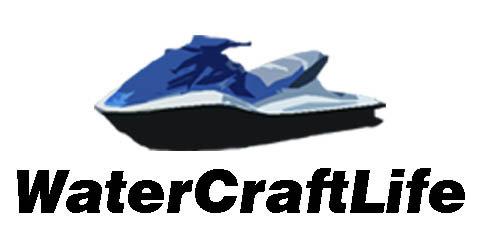A Sea-Doo is a brand of personal watercraft that’s essentially the same thing as a jet ski. Both machines are made for traveling on the water at high speeds and are best suited for recreational or rescue use. Like most boats, vehicles, or machines with an engine, sea-doos have their own special set of fault codes, and it’s vital that you know how to read them.
To easily view your Sea-Doo fault codes if it has an electrical or mechanical problem, a message will show up in your vehicle information center accompanied by a beeping noise. Once you have the fault code you can research it online and you’ll have a better idea of how to fix the problem.
Because Sea-Doos are different depending on how old they are or what model they are, there are different ways to check their fault codes. However, once you know how to locate them in your vehicle’s information center, you’ll know how to read fault codes. Knowing how to locate and read them will make maintaining your Sea-Doo much easier.
How do You Read a Sea-Doo Fault Code?
Reading the actual fault code on your Sea-Doo is the easy part. Knowing what to do to fix the problem indicated by the fault code is much harder. Depending on what it is, you might be able to fix it yourself. However, you’ll likely have to take your machine to a knowledgeable sea-doo or water vehicle mechanic for more in-depth mechanical issues. Here’s how to read a Sea-Doo fault code.
- Make sure that the safety lanyard is in the ignition of your jet ski.
- Press the SET button on the lanyard five times, and you should see a list of fault codes pop up.
- Any fault code that pops up indicates a problem with your watercraft.
- More than one code can show up, and you can scroll through the complete list by pressing the MODE button.
- Once END appears on the fault code list, you’ve reached the end of the fault code list.
- Press the MODE button once more to exit the list.
What if This Method Doesn’t Work on My Sea-Doo?
If your Sea-Doo is a model that doesn’t have this built-in fault code reading system, you’ll have to pursue other measures. The best alternative to a built-in fault code system is to have BRP Utility and Diagnostic Software or CanDooPro Software. These tools are the ones that your mechanic will use if you take your sea-doo in for professional repairs.
Each of these diagnostic tools is fairly easy to use, but it requires you to download and install them on a computer. You can then plug your computer with the ski and pull up a list of error codes. All you have to do from there is click on the Read Data button in the Faults tab, and it will display all the error codes that your sea-doo is afflicted with.
What are Sea-Doo Fault Codes?
Simply put, a Sea-Doo fault code means that there’s a malfunction with your vehicle. Malfunctions can range from minor engine problems to serious electrical issues that you or a mechanic must repair immediately. The most important thing to keep in mind when you hear or see a fault code is to stay calm, return to shore, and examine the problem.
Are Sea-Doo Fault Codes and Beep Codes the Same?
Depending on the age and model of Sea-Doo you have, you might hear beep codes in conjunction with a fault code. A beep code is a unique system that seadoo makers have come up with to make fault code detection easier. Therefore, anytime you hear a beep or string of beeps, it means you’ll have a fault code when you examine your sea-doo.
Here’s the beep code system that most sea-doos are equipped with.
- One long beep
A single long beep indicates a problem with the tether cord on the engine’s cut-off switch.
- A 2-second beep once every fifteen minutes
This type of beeping will usually require professional repairs and involves problems with the engine management system. These problems usually aren’t urgent, however, and you can finish your run before returning to shore and reading the fault code.
- A 2-second beep once every five minutes
This type of beeping usually indicates low fuel or problems somewhere in the fuel line. You can typically get back to shore before digging into the exact fault code.
- Continuous beeps that won’t stop
This is the most serious beep code and means that your Sea-Doo has a serious problem and you should turn it off immediately.
What are Common Sea-Doo Fault Codes?
Here’s a list of some of the most common fault codes for popular sea-doo models. Anytime you hear a beep code or see a fault code, you should check your owner’s manual which also has a comprehensive list of fault codes.
| Fault Code | What It Means |
| P0106 | Manifold pressure sensor is out of range |
| P0107 | Manifold pressure sensor or barometric pressure sensor has shorted out |
| P0111 | Intake manifold temperature sensor is faulty |
| P0112 | Intake manifold has shorted out |
| P0116 | Engine temperature sensor is faulty |
| P0117 | Engine temperature sensor has shorted out |
| P0118 | Engine temperature sensor has an open circuit or other electrical problem |
| P0122 | Your TPS is out of range or has shorted out |
| P0123 | Your TPS is out of range, has an open circuit, or other electrical problem |
| P0231, P0232 | Problems with the fuel pump |
| P0261, P0262, P0264, P0265, P0267, P0268 | Fuel injector problems |
| P0351, P0352, P0353 | Problems with the Ignition coil |
| P0344, P1200 | You have a burned out TOPS 10A fuse |
| P1675 | Burned out depth gauge or 2A fuse |
| P0353, P0267, P0352, P0264, P0351, P0261 | Burned out cylinder ignition coil as well as burned out 10A injection fuse |
| P0616 | You have a burned out bilge pump, beeper, or have blown a 3A fuse in the diagnostic center |
| P1678 | You have a burned out 5A spare fuse |
| P2031 | You have a burned out 10A starter or fuel pump fuse |
| P0600 | You have a burned out 2A MPEM fuse |
| P1690, P1692 | You have a burned out 7.5A fuse on the VTS |
Aside from these fault codes, there are dozens more to be aware of. You should inspect your owner’s manual for a complete list or go to your sea-doos website. Never make the mistake of reading the wrong list of fault codes that don’t match your sea-doo model. You should also never make the mistake of trying to fix a problem that’s above your level of experience.

